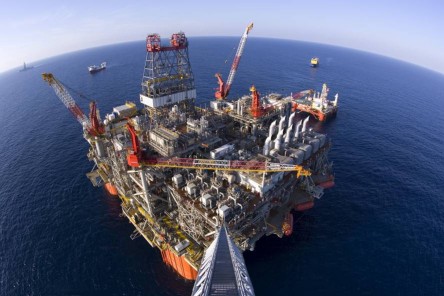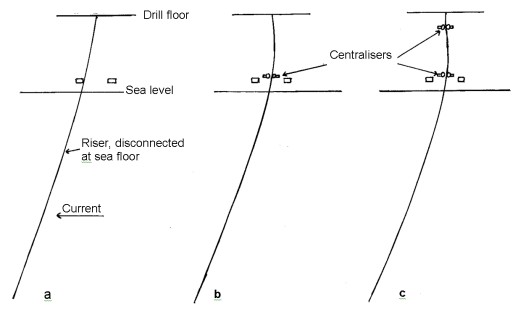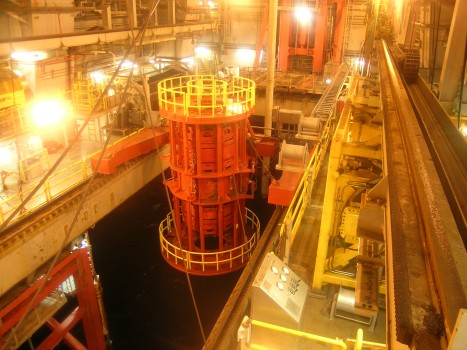| Issue 8 |
Dan had been involved with the Thunder Horse project in the Gulf of Mexico since July 2007, and described what he had been working on.
Thunder Horse is a moored oil and gas production platform (Figure 1) floating above a 2000 m depth of water. There is a complex well-head structure on the sea floor, connected to the platform by a vertical drill-pipe, the "riser". But a hurricane, quite common in this area as we all know, can cause motions of the platform of a magnitude likely to break the riser at its top end. It can then fall on to the well-head, risking substantial and very expensive damage to it. So if a hurricane is predicted, the riser has to be disconnected from the well-head and pulled up to the platform, where it can be dismantled and stored in short lengths. But this part of the Gulf of Mexico carries a strong circulating current, which swings the riser to one side as soon as it is disconnected from the well-head. If the current exceeds 1 knot, as it often does, the riser swings so much that it fouls the lower parts of the platform, and it is then impossible to raise it (Figure 2a).

|
| Figure 1: The Thunder Horse platform |

|
| Figure 2: Centralising collars to control lateral riser position |
One solution tried was to fit a fairing to the drill-pipe, thus changing its cross-section from a circle to a more aerofoil shape, with less drag. But there may be no more than two days' notice of a hurricane, so the need to remove the fairing when raising the drill-pipe made this solution impractical.
The solution they actually adopted was a movable collar on the structure at about sea level. The collar can be opened up, moved to grasp the riser, closed, and then moved to centralise it. A ring of polyurethane rollers permits the riser to be pulled up through the collar with little friction (Figure 2b). But the riser is still subject to lateral force from the current, so centralising it at sea level means that it still has substantial shear force in it above that. So a second collar is fitted further up, near to the drill floor, to correct this (Figure 2c). The topmost section of the drill-pipe can then be removed safely. Figure 3 is a photograph of the lower collar, a substantial piece of machinery, as can be seen.

|
| Figure 3: The lower collar |
The riser had to be modified too, since in its original form it was much wider at the joints between the sections. Extra tubular bits were added to make it of uniform diameter, so that it runs through the collars without jamming.
The new arrangement works well, and the riser can now be raised in any current up to the highly unlikely speed of 3 knots. The risk of riser failure in a hurricane has been much reduced, and there is increased confidence that it can be raised successfully at short notice, thus extending the time available for drilling.
| << Previous article | Contents | Next article >> |
| SOUE News Home |
Copyright © 2009 Society of Oxford University Engineers |
SOUE Home |